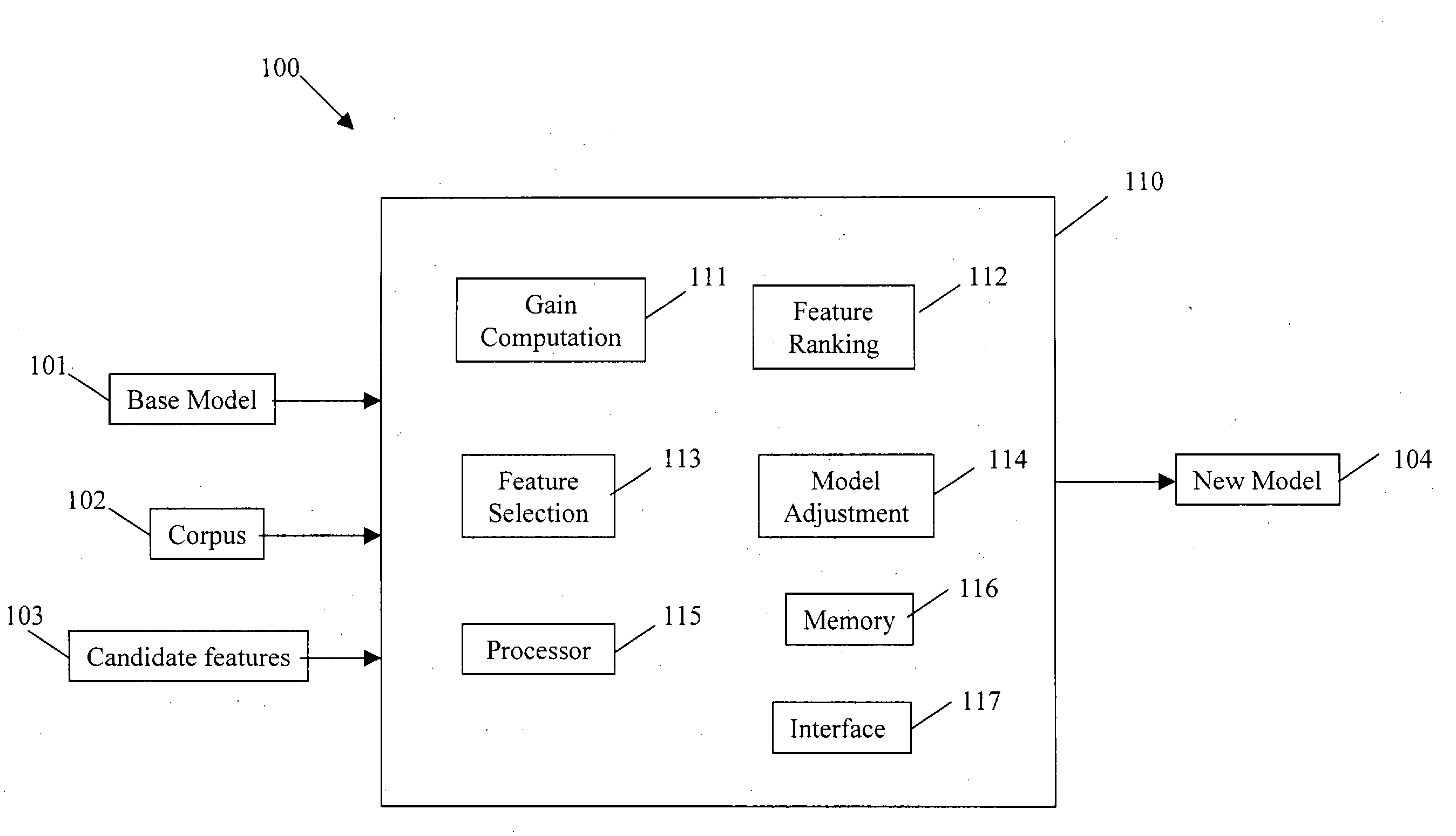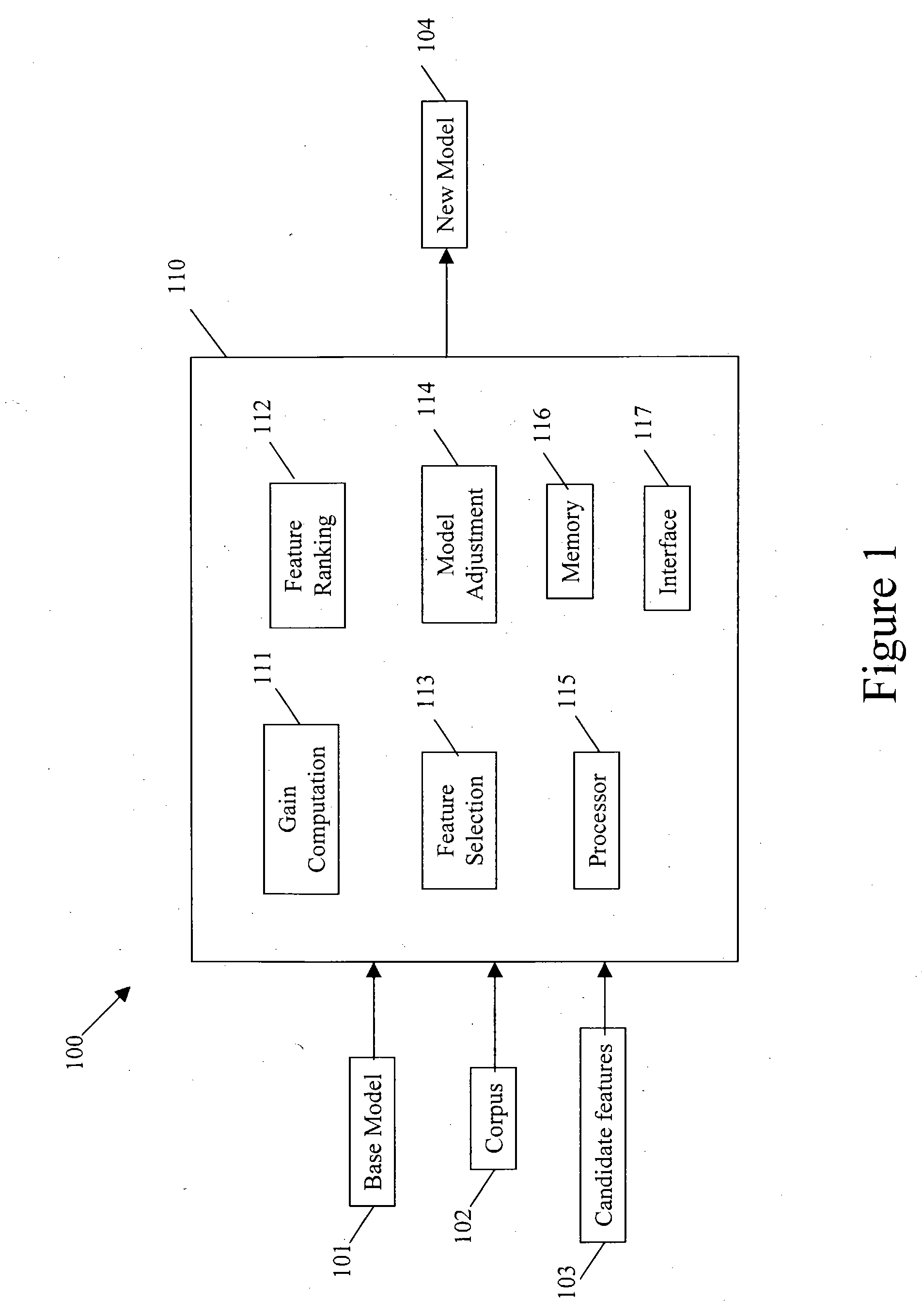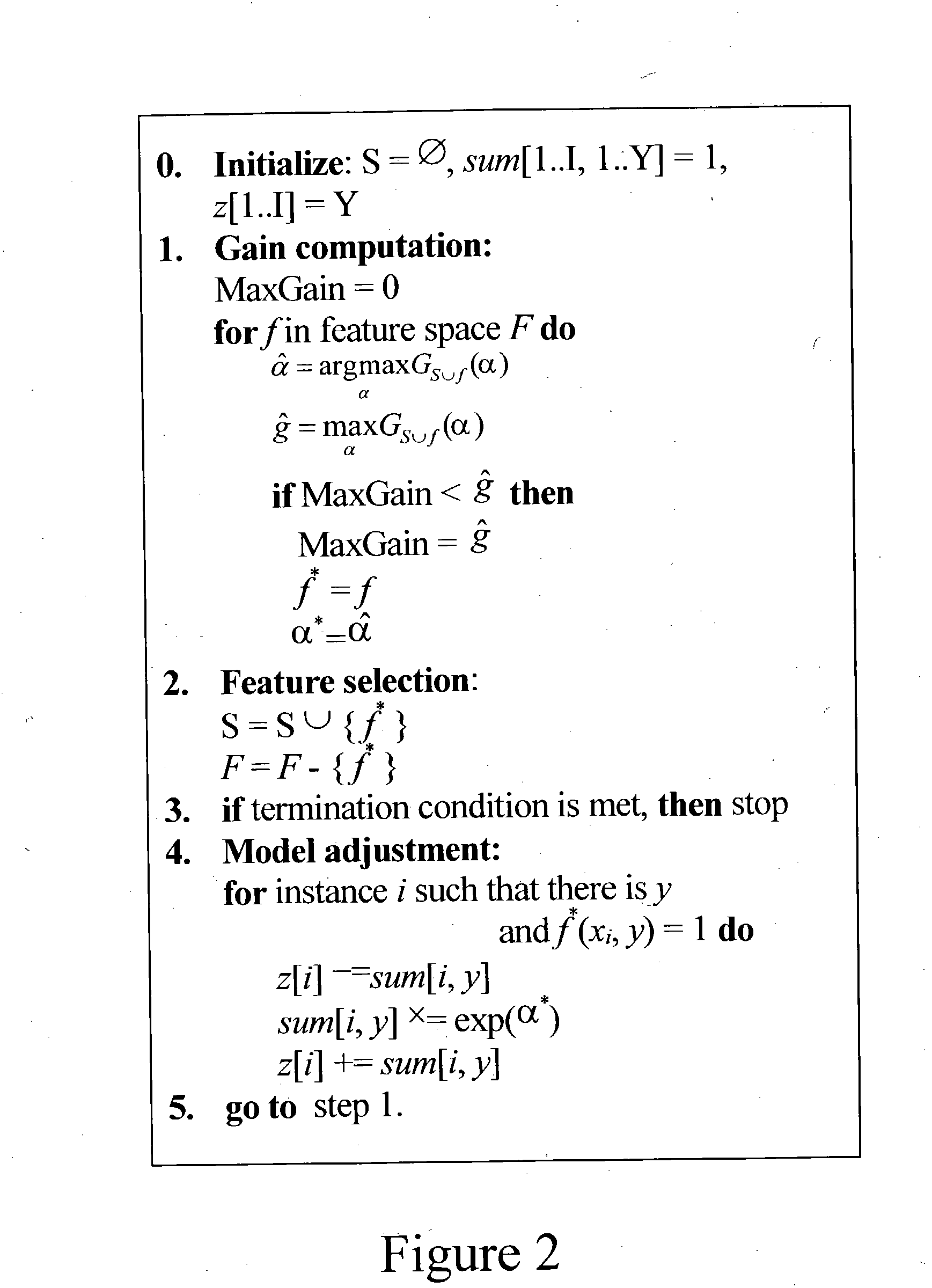Fast feature selection method and system for maximum entropy modeling
- Summary
- Abstract
- Description
- Claims
- Application Information
AI Technical Summary
Benefits of technology
Problems solved by technology
Method used
Image
Examples
Embodiment Construction
FIG. 1 shows an exemplary entropy modeling system 100 that uses a selective gain computation (SGC) method to perform feature selection, in which one or more candidate features 103 derived from a corpus of data 102 are incorporated 110 into a base model 101 by a processing arrangement 110 to produce a new model 104 for predicting linguistic behavior. The corpus of data 102 may include, for example, the financial newspaper text of the Wall Street Journal from the Penn Treebank prepared by the Linguistic Data Consortium, and the base model 101 may be, for example, a uniform distribution.
The exemplary processing arrangement 110 includes a gain computation arrangement 111 to determine or compute the gains of all the candidate features 103 during the initialization stage and the gains for only the top-ranked features during each feature selection stage, a feature ranking arrangement 112 to rank features in an ordered list, a feature selection arrangement 113 to select a feature which has...
PUM
 Login to View More
Login to View More Abstract
Description
Claims
Application Information
 Login to View More
Login to View More - R&D
- Intellectual Property
- Life Sciences
- Materials
- Tech Scout
- Unparalleled Data Quality
- Higher Quality Content
- 60% Fewer Hallucinations
Browse by: Latest US Patents, China's latest patents, Technical Efficacy Thesaurus, Application Domain, Technology Topic, Popular Technical Reports.
© 2025 PatSnap. All rights reserved.Legal|Privacy policy|Modern Slavery Act Transparency Statement|Sitemap|About US| Contact US: help@patsnap.com



